Genre: Racing Developer: AM3/Sega CS Publisher: Sega Players: 1-2 Released: 1995
Until a few years ago, I never really played a Sega Saturn other than on two separate occasions. Like most, I was mostly playing PlayStation. Now that I’ve owned one for roughly three years, it certainly is an underrated system.
One of its must-haves is Sega Rally Championship. A game from the tail end of 1995, this is an example of an arcade port done right and a reason to show off the Saturn. Like several Sega racers at the time, you were competing against the clock. You had segments to go through and it was designed in a way to reflect how a rally truly was. Obviously, the goal was to reach the checkpoints and finish a segment with more than enough time to do the next segment. Like Daytona USA and Virtua Racing, there were opponent cars that you had to pass before the segment ended. It’s that Sega way of wanting you to finish first so you can get something special. Where you placed at the end of a segment would be where you were for the next segment. They didn’t put you in the far back again.
One notable thing about Sega Rally is the fact that it was realistic for an arcade-type game. It was one of the very early examples of a racing video game where players drove on more than just the road. That first segment had players driving on a few surfaces such as dirt. Like a real-life rally, the car was going to function a bit differently on those surfaces. You had to have a good memory to deal with the type of road that you were going to race on – to know when to speed up, when to slide, and to know how the next path was going to be. That’s a lot for an arcade-style game, but it was easy to grasp.
3D on the Saturn could be a bit rough, especially when you see how some of the games looked better on PlayStation. But if done right, you could see why the Saturn could be a 3D beast when it wanted to. Sega Rally was a fine example of that. It really showed off the system’s hardware. The car modeling was fantastic, the roads were a lot more impressive compared to most racing games of the mid-to-late ‘90s, and the areas surrounding the rally were nice to look at. Also, the draw distances were quite a bit above what Daytona USA had. Overall, Sega Rally was a reason for Saturn owners to say their machine was better than PlayStation.
In that same vein as Daytona USA, you couldn’t mention Sega Rally without talking about the audio. The music fit with the racing perfectly. It was adrenaline-pumping, with a great mix of rock to heighten your senses as you made your way through the different locations. The sound effects weren’t as memorable, but they did the job, consisting mainly of the car engines, landing on the road, and hitting any barriers or cars. Of course, there was the voices, which mostly came down to the turns and the length of them. I’m also sure you have ingrained in your head the “GAME OVER YEAH!” jingle. No doubt, it’s one of the most enthusiastic ways of saying you failed at a game, trying to be cheesy and make you laugh no matter where you placed.
There were a few modes for Sega Rally. The selection was somewhat limited, but it was the best Sega could do, considering just how much it squeezed out of the Saturn hardware. Arcade mode was about just going through the race. You could also go through the entire championship or practice to work on parts of the segments. the time attack mode involved running one of the segments for either a few laps or however long you wanted until you got tired or mastered it. To be fair, there were a decent amount of modes, and you even had the option to tweak them, such as by changing the amount of laps during the rally There was also a two-player feature with split-screen racing and a few options to tweak when facing a friend.
As far as racing cars go, Sega went with vehicles that were actually used for the World Rally Championship. There were only a few, but you could mess with the features via the car settings. Like most racing games of the time, you had manual or automatic transmission, but the car setting idea made it stand out a lot more, not to mention that you could save the car you had for future use. The controls were smooth, and there weren’t any issues with the car movement and physics. Sega Rally also supported the Sega Arcade Racer steering wheel, and you could change to one of two racing view perspectives.
Sega Rally did include some other options, such as the ability to tweak car handling, a difficulty adjustment for the rally championship, and even a few time attack features like Ghost Mode. Additionally, the Saturn’s internal battery or backup RAM cartridge allowed you to keep well-detailed racing records, much like other Sega racers. With all these ways to tweak the experience, Sega Rally really was the perfect kind of racing game. It was simple; it was sweet. There were plenty of gameplay options beyond the basic arcade mode. There aren’t really any major flaws to it.
Sega Rally may not be everyone’s cup of tea, but it’s that type of game that you will go back and try to improve and master as you get more comfortable with the different stages. If you’re looking for a quality racer on the Saturn or just a great game to play overall, then Sega Rally is a no-brainer. It’s everything that you envision with an arcade port. Every aspect is given so much care. This is an example of the perfect game to have for the system.
Score: 10 out of 10

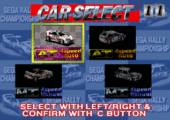
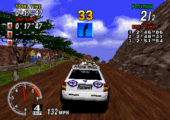
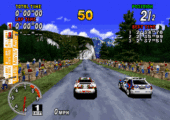
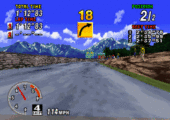
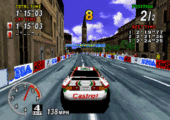
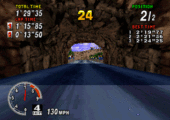
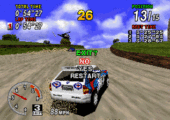
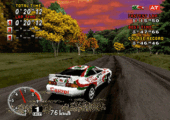
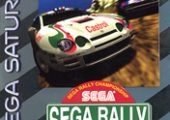
Recent Comments